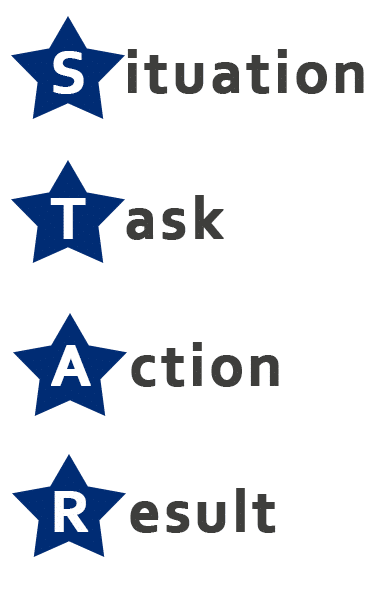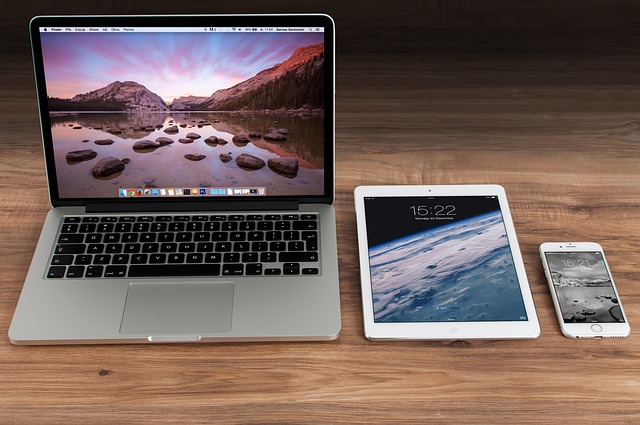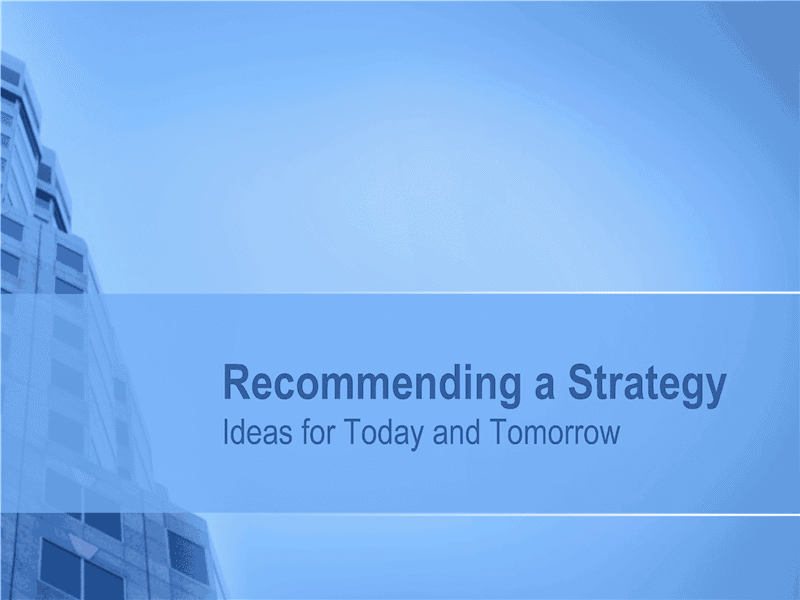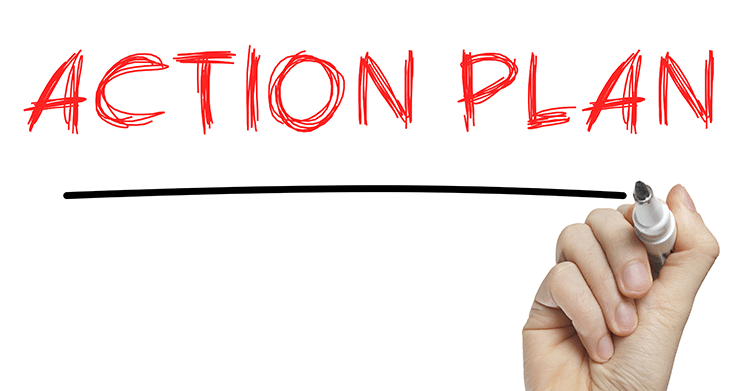Interview Tips
Companies often use phone interviews as the first step in the hiring process. An interviewer’s goal is to determine whether the candidate possesses the technical skills for the position, can speak to the desired qualifications and accomplishments, and is truly interested in the opportunity. The candidate’s goal is to gather information about the role, company, and hiring manger while also trying to make it to the next step. The phone interview will be the first impression made. Ensure a positive impression by following these phone interview tips:
Conduct Thorough Research.
Most job seekers know that researching the company is a must. However, stand-out candidates do a deep dive into the granular details of the company, position, people, corporate objectives, team goals, and desired attributes. Companies generally hire when they are launching a new initiative, an employee leaves or is promoted, or to fill a skills gap. They have a set of tasks and goals in mind for the new employee. Attempt to answer the following questions when conducting company research:
Interview:
- When is the interview?
- How long will it last?
- Who will conduct the interview?
- What is their background?
- What type of candidate will impress?
Company:
- What are the basic facts: history, size, locations, divisions, etc.?
- What products or services do they offer?
- Who are their competitors?
- What is their industry reputation?
- Who are their clients?
Role:
- What are the job requirements?
- Why is this position open?
- What are desired milestones and accomplishments for the role?
- What are the challenges in the role?
Anticipate the Interviewer’s Questions.
An experienced interviewer will cover a range of topics specific to industry knowledge, technical skills, company familiarity, and skills related to the job content. The job description is the best indication of questions that will be asked; Blue Signal can also provide insight on the hiring manager’s personality, interviewing style, and potential questions.
Interviewers across various industries also pull from a pool of common questions to gauge a candidate’s interview preparation. Candidates should rehearse answers to these frequently-asked questions.
“Tell me about yourself.”
Often the interviewer is as nervous as the candidate, and will ask this neutral, open-ended question to get things going. The best answer is substantial, brief, and provides a few key details about how the candidate’s past experience has led to this opportunity. In general, give a 90-second overview of the past 10 years, mentioning experience and skills that are relevant to the position.
“What experience do you have that relates to—?”
The answer should focus on the identification, prevention, or solution to problems within the candidate’s area of expertise as they relate to this position. Demonstrate prior success to hiring managers using stories that give specific examples of the experience in question. See additional tips in the next section.
“What are your strengths?”
Target the top skill requirements of the position. Consider soft skills (e.g. preventative problem-solving) and describe solutions with examples that are specific to the role.
“What are your weaknesses?”
There is no need to give a hiring manager additional obstacles or apprehension. Avoid the cliché of camouflaging a strength to look like a weakness (e.g. “I work too hard”). This approach is transparent and disingenuous. Instead, discuss a true weakness with a progress plan already in place to correct it. For instance, a candidate whose technical knowledge is out of date may indicate that he is taking a training course to learn the newest industry software. A candidate with shaky presentation skills may describe how she availed herself of public speaking seminars and now successfully presents at the company’s monthly cross-departmental meetings.
“What do you know about our organization?”
Regardless of the job, clients are looking to hire self-starting, motivated, professionals. Before interviewing, candidates should know:
- The company name
- Who owns the company, and their status (public or private)
- Their size in terms of revenue and number of employees
- Their products and services
- Their competitors
“Why are you looking for a new opportunity?”
Be honest, stay positive, and focus on the new opportunity and challenge. Avoid speaking negatively about colleagues or employers, no matter how bad the situation is. Be brief, and do not go into unnecessary detail. If possible, discuss unsatisfactory job elements that are impossible to change, such as commuting distance, company size, industry focus, etc.
“If we hire you, where do you see yourself in five years?”
“I’m looking to grow with a company,” is a safe answer. Direct answers, e.g. “I hope my performance will result in at least one promotion by that time,” convey enthusiasm and ambition. Avoid describing unrealistic advancements (“I hope to be CFO in five years”), which appears overreaching.
“What can you bring to our team?”
Before answering, be absolutely certain of what the company actually needs and what it currently has. Candidates may describe their strengths in glowing terms, but if it does not match with the hiring manager’s perception of the company’s needs, the candidate will not secure an offer.
Understanding the company’s true needs is an interpretative art that depends upon carefully reading the job description, listening to the recruiter, and accurately listening to the interviewer. If the company’s most-desired requirements are unclear, answer with a corollary to show good listening skills. Examples are below:
-
- “Your job description indicates you are seeking someone with strong technical skills who can also lead a team. I can deliver this to your team based on my experience as the lead developer in my current role, where my responsibilities include…”
- “You mentioned earlier in the interview that the company values strong problem-solving skills. At my current role, I have taken the lead on many complex problems that have arisen during the product development project, such as…”
Stay positive, and focus whenever possible on measurable results, increases in sales, and performance. Connect past experience with the ability to solve the company’s problems today.
Prepare Strong Answers: the STAR Method.
Evidence defeats doubt. Each question is an opportunity to remove objections in the interviewer’s mind. Stories are an effective way to answer a question; they are enjoyable to hear, make facts easier to remember, and tend not to get interrupted. Using the job description as a guide, build six or more “glory stories”—success stories demonstrating job-related skills in action—to ensure a structured, thoughtful response to a variety of questions.
Use the STAR method to structure answers:
S – Situation or problem: set the scene
T – Task or Target: give specifics of what was required, who was involved, when, where, etc.
A – Action: explain steps taken, skills used, behaviors, characteristics
R – Result: frame the outcome positively, even if it did not according to plan
A STAR story should take about 2 minutes to tell. Deliver each story with energy and enthusiasm about a real experience. It does not have to be a work experience, as long as it describes a skill or behavior relevant to the job. This method addresses tough work-related questions in an organized, detailed, and compelling manner. Listeners will remember more detail surrounding the answer and the message within it, because the response is structured logically in a style that is easy to follow and understand.
Further guidelines to answering questions:
- Avoid negative answers!
- Keep answers targeted and specific; include relevant facts and figures, and ensure all information aligns with the resume.
- Use examples to answer questions. This conveys an ability to identify and analyze a problem, weigh options, and implement a solution. Hiring managers look for these skills.
- As the interview winds down, give even higher thought to answers and word choice. These answers (and the candidate’s delivery of them) will resonate longest.
Ask Good Questions.
“Do you have any questions?”
Interviewers generally leave time at the end of the interview for the candidate to ask questions. This is an essential opportunity for candidates to differentiate themselves to the interviewer. Target the conversation to demonstrate research and to highlight relevant skills that have not yet come up in the conversation. Be sure to show strong interest in the company with every question.
Bring 12 or more prepared questions to the interview—although there will not be time to ask all of them, many will be answered during the course of the conversation, and it is important not to run out.
A candidate’s questions say a lot about them—listening skills, research, consideration of the opportunity, and more. In a phone interview, avoid self-centered questions regarding money or perks, such as, “Where will I park?”, “How much vacation do we get?”, and “Will I have an expense account?” Concentrate on questions about how the company is growing and how to grow with it.
Ask for opinions, not absolutes. It will get better answers and build rapport faster. For example:
WEAK: “What are A&E’s strengths?”
STRONG: “In your opinion, what is great about working at A&E?”
WEAK: “What is A&E’s competition?”
STRONG: “Who do you feel are A&E’s biggest competitors?”
Questions exhibiting strong research will demonstrate intelligence, competence, and preparation. Most importantly, they show enthusiasm.
GOOD: “In your opinion, what is great about working at A&E?”
BETTER: “I saw A&E was recognized as one of the New York area’s best places to work. In your opinion, what is great about working at A&E?
GOOD: “Who are A&E’s local competitors?”
BETTER: “ABC Corp looks like a major A&E competitor in the Northeast region. In your opinion, are they? Why so?”
Practice Good Communication.
A bad phone connection can quickly kill an interview. Candidates can only control their own phone line, so make plans to ensure a problem-free connection. Additionally, access to e-mail and the internet often comes in useful during an interview.
Before the call:
- Find a private area without background noise or interruptions.
- Use a land line if possible.
- Leave extra time in case the interview runs long.
- Keep a copy of the resume, questions, info, and a notepad close at hand.
- Try to have access to the internet, just in case.
- Conduct the interview in a place where it is possible to stand up and walk
- Have a mirror to gauge facial expression and posture while on the phone.
- Use a headset, if possible.
A candidate’s voice is arguably the most important element of preparation. The hiring manager’s first impression depends on the voice they hear when the interview starts. So warm up! Sing a few bars, say the Pledge of Allegiance, or read a page from a book. The quality, tone, and speed of speech all convey personality. Enthusiasm and interest are two of the greatest strengths a candidate can convey when talking on the phone.
In a first interview, strive to do more listening than speaking. Focus on what the interviewer is saying; be sure to fully understand questions or statements to avoid saying something inappropriate. Listening is as much a part of communication as talking. Do not interrupt or cut off an interviewer; allow them to complete questions fully before giving an answer.
- Talk directly into the phone.
- Relax and speak naturally.
- It comes across even over the phone.
- Sound cheerful; enthusiasm is contagious.
- Standing or moving often helps convey a relaxed and conversational tone.
Establish Rapport with the Interviewer.
Time is short and the interview purpose is business, not pleasure; therefore, avoid irrelevant topics. Research the interviewer’s background, such as work history, alma mater, and industry specialties, as this provides important data on potential common ground and what is likely to impress. Mentioning a common interest or experience can establish a quick connection.
As the interview progresses, actively listen to identify the interviewer’s personality—are they dry and to the point? Does the interviewer have a sense of humor? Do they speak quickly or slowly? Do they speak straightforwardly with simple language, or use complex sentence structure and vocabulary? Make an effort to align each response and its accompanying pace, tone, and volume with the interviewer’s style for a smoother conversation.
Avoid Discussing Money.
 Money should not come up in a first interview, especially not over the phone. While money is a key factor in accepting a job, career experts agree that discussing salary during a phone interview is premature. The brevity of a phone conversation makes it difficult to gauge a fair salary for the position, and discussing compensation at this early stage usually puts the candidate in a weaker negotiating position.
Money should not come up in a first interview, especially not over the phone. While money is a key factor in accepting a job, career experts agree that discussing salary during a phone interview is premature. The brevity of a phone conversation makes it difficult to gauge a fair salary for the position, and discussing compensation at this early stage usually puts the candidate in a weaker negotiating position.
If the interviewer brings it up, emphasize the opportunity for a career move, not merely a job change. If the interviewer presses the issue, a candidate may volunteer their current salary, provide their target salary range, or simply ask, “What is the salary range for the position?” If the interviewer names a number, the candidate may indicate if their salary falls within their target range. If not, continue the interview and discuss the issue after the call with Blue Signal, who can conduct negotiations.
Close in on the goal.
The goal in a phone interview is to advance to the next step. The next step could be and on-site interview, a Skype interview, a second phone interview with a different hiring authority, or even a request for references. Keep this goal in mind.
Other goals include:
- Answer questions well
- Learn from the stories and information that the interviewer shares
- Gauge personal interest in the position
- Establish rapport with the interviewer
- Enjoy the interview
At the conclusion of the phone call, the hiring manager may invite the candidate verbally to the next step which might include a face-to-face meeting. It pays to come prepared with several possible dates for this purpose. If the interviewer does not offer a follow-up meeting, consider asking about next steps.
If the interview has gone well, and the candidate intends to pursue the role, it is a good strategy to directly ask the interviewer, “In your opinion, am I qualified for this role?” This triggers an opportunity to review weak points and answers that need further clarification to persuade the interviewer. Answer the concerns as fully as possible with proof of the skills required to be successful in the position. If the interviewer brings up objections that are difficult to answer without some reflection, say, “I would love to discuss that with you at our next meeting,” or address the concern in the thank-you note.
Call Blue Signal.
 It is important to call Blue Signal as soon as the interview ends. Most hiring managers follow up with their recruiter within an hour to ask them for their opinion on moving forward. It is important that they know how the interview went from the candidate’s perspective, so that they can manage this conversation effectively.
It is important to call Blue Signal as soon as the interview ends. Most hiring managers follow up with their recruiter within an hour to ask them for their opinion on moving forward. It is important that they know how the interview went from the candidate’s perspective, so that they can manage this conversation effectively.
Completing an interview is a high-adrenaline moment, and Blue Signal recruiters are specifically trained to talk to people at this moment. Hearing the candidate’s raw emotion will help both the recruiter and the candidate themselves determine if this is a good fit.
Send a Thank-You Note.
Candidates who fail to send a thank-you note miss a big opportunity. Few companies today rely on just one person make a hiring decision—usually a team of people will decide on a candidate’s fit. Therefore, when the interviewer discusses a candidate with their team, it pays to arm them with extra evidence that the fit will be a good one.
Within 24 hours of the interview, e-mail a thank-you note—a brief letter detailing a few experiences that align with the role. Emphasize success in the areas of need that arose during the discussion. Provide any follow-up information requested by the interviewer, such as references or portfolio samples. Ensure all grammar and spelling is correct. Double-check the spelling of the interviewer’s name and title in the follow up thank-you note.
Performing well in a phone interview depends primarily on good preparation. Interviewers can tell when a candidate has invested extra time into their research and personal presentation. Take time to address each aspect of the interview to improve the odds of success. Good luck!
 Thanks to technology, a growing number of companies are using virtual interview software, like Skype, to screen applicants without spending heaps of time and money on travel. This allows hiring managers and candidates to “meet” without actually meeting. Virtual interviews follow a similar format to phone interviews—but they require some additional preparation. (See Blue Signal’s Phone Interview Tips for a guide on preparing for a phone interview.)
Thanks to technology, a growing number of companies are using virtual interview software, like Skype, to screen applicants without spending heaps of time and money on travel. This allows hiring managers and candidates to “meet” without actually meeting. Virtual interviews follow a similar format to phone interviews—but they require some additional preparation. (See Blue Signal’s Phone Interview Tips for a guide on preparing for a phone interview.)
Whether participating in an in-person interview or a videoconference, your goal is the same—to make a lasting impression. Successful candidates treat a Skype interview with the same level of formality and commitment as they do an in-person interview. Follow these 10 tips to ensure a smooth and successful interview:
Use a reliable computer, not a mobile device.
Use a laptop or desktop computer; avoid using phones or tablets for a videoconferencing call. Test the internet connection, speakers, microphone, and software. Use a high-quality webcam and a headset, if possible; headsets reduce background noise and improve audibility for both interviewer and candidate.
Test out the technology.
Become familiar with the video call software in advance, under the same circumstances as the interview. Companies may use Skype, Google Hangouts, Facetime, or another platform. Download the interviewer’s preferred software and allow plenty of time to practice using it. The username (e.g. jonsmith1), display name (e.g. Jonathan Smith), and profile image should all be simple and professional.
![]()
Although the conversation is the most important aspect of the interview, technical issues and poor sound quality can form a negative impression in an interviewer’s subconscious memory. Use a fast, reliable internet connection. If a technical issue arises during the interview, address it immediately rather than risking a miscommunication.
Put the camera at eye-level or higher.
Looking down into the camera creates an illusion of a double-chin, while looking up into a camera emphasizes confidence and compliments cheekbones and jawlines. If necessary, raise the level of the laptop by placing it on a box or stack of books (make sure they are sturdy, first). Before the videoconference, test out the camera and adjust it to the optimal height, angle, and distance.
Maintain eye contact with the camera, not the face on the screen. Be certain that the camera is at the top of the laptop to make this more natural. Looking directly the camera gives the illusion of making eye contact with the interviewer, while looking at the screen gives the impression of looking away from the interviewer’s eyes.
4. Choose an appropriate background.
A bare, solid-colored wall makes the best background. No controversial or confidential material should be in view of the web camera. The interviewer will want a clear, unobstructed view of the candidate’s face and shoulders. When in doubt, sit farther back.
During the interview, the goal is for the interviewer to focus on the conversation, not the surroundings. If the background is distracting, it will detract from the content of the conversation. Well-lit rooms are preferable, but avoid very bright lights and sitting close to a window. Sunlight can cause a glare that makes it difficult for the camera to adjust to show the candidate’s face.
Do a mock interview.
Practice with a friend or Blue Signal recruiter to gather feedback and make adjustments. Nuances that are otherwise unnoticed can stand out during a video call. Give the friend practice questions to read, and have them evaluate body language, expression, voice, and the content of the response. Check for distracting behaviors, such as staring down at the keyboard, fidgeting, the use of filler words such as “um,” or distracting hand gestures. All of these behaviors are harder to moderate when the audience is on a screen instead of in the room.
This is also a good time to practice a confident, enthusiastic delivery of responses. Record answers, if possible, and gauge whether they need revision before the interview. The interviewer only has one chance to hear the answer to a question!
Create a desktop folder of reference documents.
Some reference documents and notes can help to move the conversation forward. For instance, supporting documents such as sales figures may be handy to have during the conversation. Save documents to a new, dedicated folder on your desktop. During the adrenaline-filled moments of the interview, this will avoid a frantic search to find a key piece of information.
Use notes.
Aside from a desktop folder of helpful documents, keep a separate printed set of notes. This includes a resume copy, a quick reference sheet of company research, the job description, and any other key facts. Keep notes organized and easy to read; large blocks of text are difficult to glance through quickly and may result in the candidate frantically shuffling through pages or losing focus as they look for the fact they were trying to find.
One advantage of Skype interviews is the ability to use notes. Keep them out of view of the webcam and avoid shuffling them or reading off them during the interview. Conduct the same level of research that would be appropriate for an in-person interview.
Check for software updates and close all programs.
Some computers automatically restart when they install updates. Do not risk the computer unexpectedly restarting in the middle of the conversation! Before the interview, install any updates and make sure that no automatic restarts are scheduled. Close every other program other than Skype during the conversation, especially ones that generate noise, pop-ups, or notifications. Candidates should send a clear signal that interviewer has their undivided attention.
Dress for success.
Candidates should prepare their appearance as they would for a face-to-face interview. Keep body language neutral and positive, and avoid fidgeting. Body language is more difficult to read over a video call, so smile and engage the interviewer clearly.
Smile, smile, smile.
Smiling has countless positive benefits. It is scientifically proven to calm nerves and lower stress hormones in the bloodstream. Smiling conveys openness, attentiveness, and interest. Enthusiasm is contagious, and it will encourage the interviewer to engage and show interest in the conversation.
An in-person interview is a great sign! It is rarely the first step in the process, so it shows positive feedback. In-person interviews often involve with multiple members of the decision-making team, so it also shows they are serious and interested. If a candidate is fortunate enough to be invited to an in-person interview as the first step in the hiring process, review our Phone interview Tips first for additional preparation tips.

Research the company.
Use notes from previous conversations to develop and refine research topics for the in-person interview. Come prepared with a few talking points to refer back to the phone interview.
- Conduct additional research on topics that came up during the phone interview. Record notes and create follow-up questions.
- Reach out to contacts within the company or the industry in general. As much as possible, get an insider’s perspective to understand the true nature of the role.
- Research the industry and learn more about the competition. Interviewers are likely to know more about their competitors than about any other organizations. Speaking intelligently and confidently about the industry is an excellent way for candidates to distinguish themselves as competent, valuable employees.
- Check LinkedIn. Study the LinkedIn profiles of everyone who will be present on the interview. Consider their background, role in the company, interests, skills, and what information they will be interested in gaining during the interview.
Review common interview questions.
The in-person interview involves more detailed questions that focus on goals, experiences, and problem-solving abilities. Additionally, be ready to answer some of the same questions again—this time with even better answers. The company’s goal is to determine whether candidates have the technical expertise to do the job and benefit the company. They are also judging how candidates will fit into their culture and how much they desire to succeed.
Common questions:
- Describe a typical day at your current office.
Briefly summarize core business activities, emphasizing the ones that relate to the new job.
- What do you like most about your current position? What do you like least?
Candidates should provide insight into the elements of their ideal work environment. When describing undesirable traits, avoid naming problems that may be present in the interviewing company’s workplace.
- What are your professional goals?
Discuss specific short- and long-term professional goals, their timeline, and the path to achieve them. Be realistic and specific, including a mix of quantifiable and open-ended goals.
- How do you prioritize projects?
Give an example of working under pressure to accomplish organizational goals.
- Why should I hire you for this position?
Discuss qualifications and how they fit with the position. Emphasize interest in the opportunity and the capacity to increase profitability and productivity.
- Do you have any direct reports? Describe your approach to management. What is your leadership style?
Have specific examples ready, and stay positive. Avoid naming names.
- Are you applying to other jobs?
Answer honestly. If yes, indicate a search for similar jobs to demonstrate a targeted job search. This shows a commitment to the process.
- How would your current co-workers describe your personality and work practices?
Frame answers positively. - What causes you to lose your cool?
Everyone experiences this. Select a topic that is reasonable and focused on results, such as coworkers missing deadlines, tardiness, etc.
- Describe a situation where you had to perform under pressure.
- What are your greatest accomplishments?
Highlight two major accomplishments. Do not just indicate a metric (e.g. 20% sales growth). Instead, describe the metric as part of a story (e.g. achieving 20% sales growth by identifying a new niche market, creating a system, etc.).
- Describe a team project you were a part of. What role did you play on the team?
Speak about the performance of others positively, not just your own performance. - Have you worked for a younger/older (or male/female) boss before? How did you feel?
This indicates the manager for this position likely fits the question’s description. A negative answer is a deal-breaker for the job. If asked, candidates should assure the interviewer that age and/or sex does not affect their professional relationships.
- What type of salary are you looking for?
Do not give a specific number. Convey that a fair salary would represent the responsibilities of the position and past experience. Blue Signal handles salary discussions on the candidate’s behalf.
- What is your current salary?
Be honest, including pay, bonus, commissions, benefits, and paid time off. If expecting a raise or special commission/bonus in the near future, mention it. The interviewer may ask if they can verify salary; be prepared to answer.
- Are you willing to relocate?
Answer truthfully. A “no” may not result in disqualification. Specify if the answer would change within the next three years.
Grooming and appearance are a top priority.
Hiring managers have a short window of time to form an opinion of a job candidate, so a first impression is extremely important. Any sloppiness or missed detail is likely to stand out and may even cost a candidate the job. A candidate’s personal presentation directly reflects their level of respect for the company and the challenges of the position.
General Guidelines:
- Shower that morning.
- Hair should be clean, dry, and neatly done in a conservative style.
- Avoid combing hair while wearing a jacket.
- Keep fingernails trimmed and clean.
- Clothes should fit very well (ideally tailored), and should not be baggy or loose.
- Avoid accessories or membership pins that relate to religious or service organizations.
- Use deodorant but avoid colognes or fragrances.
- Do not smoke or drink alcohol before the interview.
What to Wear - Male Candidates:
- Dry-cleaned and pressed suit in navy, gray, or black
- Pressed white button-down shirt
- Silk tie in quiet colors and patterns
- Polished black leather dress shoes
- Calf-height dress socks that match the suit
- Minimal jewelry, e.g. wedding ring and watch
- Freshly trimmed and neat facial hair. It may be preferable to get a clean shave if the company has a conservative dress code
What to Wear - Female Candidates:
- Suit or tailored dress in a neutral dark color. Hemlines should be at least knee-length.
- Pressed, collared, button-down shirt in a color that complements the suit jacket.
- Closed-toed classic pumps or flat shoes in a neutral matching color with no more than a 2-inch heel.
- No long nails. If wearing nail polish, choose a neutral color or French manicure.
- Minimal, natural-looking makeup.
- Classic, minimal jewelry, e.g. earrings, conservative necklace, and watch. Avoid loud or chunky statement pieces.
Manage logistics.
In the days before the interview, clear any commitments that might distract or compete with interview preparation. Do not let anything get in the way of a good night’s sleep—preferably for the whole week, not just the night before the interview. Aim to show up 10 minutes early. Study the route in advance—do not count on a GPS. Look at a map and have a hard copy of directions in the car. It pays to make a practice run ahead of time. Drive to the interview location, preferably during rush-hour traffic, in order to time the drive and pinpoint exactly where to go.
Find a place to discreetly kill time if arriving more than 15 minutes for the interview. A nearby café or similar place in the area is a good place to recharge and relax for a few minutes before walking into the interview.
Create a paper trail.
Despite the increasingly digital nature of business, in-person interviews should create a paper trail.
- Bring 5 to 6 resume copies; interviewers should have them, but often do not. It is an easy way to demonstrate good preparation skills.
- Bring a notepad in a professional portfolio or padfolio, plus several pens. Do not risk a bad impression by ignoring small but important details like this.
- Bring a printed copy of references in case the interviewer asks for them.
- Ask everyone for a business card to avoid forgetting contact information or the spelling of a name.
- Be ready to fill out a formal application. Fill it out completely, including references (list salary requirements as “open”). Failing to complete an application in its entirety shows poor attention to detail and a lack of respect for the company’s processes.
Turn the cell phone off.
Apart from an ongoing severe family crisis, there is absolutely no reason to interrupt an interview. Eliminate all possibility of a distraction by switching cell phones off—not on vibrate mode, not on airplane mode, not on silent. Keep it in a pocket (just in case an issue arises, such as the interviewer not being present). Leave all other devices in the car or at home.
Master nonverbal cues.
 In a first encounter, interviewers will often judge what they see as much as what they hear. Candidates should be themselves and on their best behavior: speaking and acting confidently.
In a first encounter, interviewers will often judge what they see as much as what they hear. Candidates should be themselves and on their best behavior: speaking and acting confidently.
- Posture and body language has a big impact on the impression a candidate conveys. Maintain posture that is poised and alert. Sit up straight and do not fidget.
- Maintain friendly eye contact throughout the interview. Do not stare at the floor while speaking.
- Echo the same level of enthusiasm as in the phone interview.
- Smile to convey a positive attitude.
- Shake hands with a firm but not viselike grip.
Evidence defeats doubt.
Interviewers want to address concerns before making a hiring decision. Candidates should prove their skills and experience through stories that demonstrate the job requirements. Use the STAR method (see our Phone Interview Tips section) to create narratives of past success to defeat any doubts that an interviewer may have.
Best practices for answering interview questions include:
- Speak with confidence. Candidates should sell themselves as the best choice for the role.
- Small talk is a good way to build rapport, but stay on target.
- Stay positive; never speak negatively of a previous employer.
- Be conversational, but let the interviewer lead the conversation.
- Focus on measurable accomplishments, utilize specifics and demonstrate a problem-solving approach.
- Avoid using terms or acronyms that are not used industry-wide.
- Even when disagreeing with an interviewer, do not be argumentative.
- Avoid any controversial subjects such as politics or religion.
As much as possible, answer each question with a specific event in the past that supports it. Use the following questions to prompt stories to tell during the course of the interview.
Sample STAR Method Story Questions:
- When have your technical skills made an organization look better to a client? How?
- When was a time you were thrown into a situation and succeeded?
- How do you attack a project? What is a good example of a time you did this?
- Tell about a time that a project did not go as planned. Frame the end result in positive terms.
- When was a time when your dedication was what made the difference between something getting done and not getting done?
- When was a time you took on a difficult challenge or undesirable task that turned out to be rewarding in the end?
- When was a time where you had to be in charge of cross-functional teams? What is a story where you worked with several different departments to succeed in a goal?
- What is a success story about taking very limited resources and using them in a creative way to get the job done?
- Tell me about a time a group of people you were loosely in charge of did not want to do something and your influence helped get it done?
- When was a time you were a great boss/mentor/leader?
Ask good questions.
Prepared questions are just as important as answers. Asking the right questions shows intelligence, enthusiasm, and interest in the role; asking the wrong ones, or having no questions at all, demonstrates poor preparation skills and a lack of enthusiasm.
It is important to prepare carefully thought-out questions to ask during the interview. If meeting with multiple interviewers, prepare questions in advance for each of them. It is good practice to ask one or two overlapping questions, but do not ask everyone an identical set of questions.
- Ask open-ended questions (what, when, where, and why questions); they elicit longer answers and therefore lead to more conversation.
- Ask the interviewer to describe their ideal candidate, then relate past experience to their ideals.
- Prepare questions that relate to larger business issues: competition, technology, new regulation, etc.
- Listen to the answers and incorporate them into follow-up questions and remarks.
- Do not interrupt.
Sample Questions:
- What is your goal for this position? What are the key responsibilities in your opinion?
- What made you choose to work at this company?
- What is your management style?
- What characteristics in an employee do you seek most?
- What do you expect me to accomplish in the first 30, 60, and 90 days in this position?
- What are the largest challenges your team is facing right now? What is your plan to overcome them?
- What are the largest challenges the company is facing right now? How is your team working to overcome them?
- What characteristics did you like most about the individual who previously held this position?
- What things could cause an individual to fail on your team?
- In five years, if I do extremely well in this role, what career advancement would be possible?
- What do you enjoy most about your position?
- Where do you see the company in 5 to 10 years?
- Why is this opportunity available?
- Where does this position fall into the organization’s structure?
10. Ask for the job.
If a candidate truly desires the job at the conclusion of the interview, it is appropriate to ask for the opportunity. Candidates should reiterate enthusiasm and interest in the position, give an example of how they can benefit their team, and ask if there is any additional information the interviewer needs before making a decision. Close with a handshake, smile warmly, and ask when to expect to hear from them.

POST INTERVIEW:
When the interview is concluded, call Blue Signal immediately. A big part of the company’s decision on moving forward with a candidate depends on how the recruiter votes. The recruiter needs the candidate’s feedback in order to make the best possible presentation to the hiring manager.
Most of all, review notes and make detailed additional notes for later reference. This will assist in recalling specifics in the event of a follow-up interview and during the decision period after receiving a job offer.
Send a thank-you note to each interviewer after the meeting, no more than 24 hours later. Read more details about writing an excellent thank-you note.
Good luck!
In today’s fast-paced workplace, business casual interviews over lunch or coffee are common. Although lunch interviews are less formal by design, candidates should continue to put diligent thought into their presentation. An interview over lunch or coffee is similar in format to an in-person interview (See our In-Person Interviews tips section).
Coffee or lunch interviews are a glimpse into how a candidate acts in a less formal setting. They are a common format when a candidate is meeting multiple interviewers in a single day. A company may also conduct a lunch interview near the end of the hiring process when a candidate has already forged a personal connection with the hiring manager. Follow these 10 tips to prepare for a coffee or business lunch interview:
Follow these 10 tips to prepare for a coffee or business lunch interview:
Choose an appropriate outfit.
Depending on the interview location and the type of food the restaurant serves, business formal or business casual may be appropriate.
- Wear a suit or similar professional business attire, as for a standard in-person interview. Ensure that everything fits well and is comfortable to sit and move in. Check the restaurant’s website to get an idea of the formality level.
- Avoid large purses, briefcases, and bulky coats, which can get in the way and look sloppy. Bring as little as possible; at most, a very small pocket notepad and pen for note-taking.
- Wear dark colors in case of any accidental food spills. Bring a stain remover pen tucked discreetly in a pocket, just in case.
- When in doubt, Blue Signal can advise what to wear.
Agree on a specific place to meet.
Despite their casual appearance, lunch interviews are often tight on time, and the process of being seated and placing orders eats up a surprising amount of time. Minimize lost time by agreeing exactly where in the restaurant to meet the interviewer, whether in the lobby or at the front door. Look up the menu and mentally select a few potential menu items beforehand to allow more time to focus on the conversation.
Come prepared with small talk.
Casual interviews over coffee or a meal often involve more small talk than a formal in-person interview. It pays to come prepared for some small talk while waiting to be seated. Knowing the interviewer’s interests can help in choosing a conversation starter that will build rapport—for instance, asking the interviewer about last night’s game if he has indicated in the previous conversation that he is a football fan. In general, topics should be neutral and reflect professionalism.
Follow the interviewer’s lead.
Allow the interviewer to lead the way to the table and sit down first. Be open to their suggestions and allow them to lead the conversation. Lunch interviews will generally follow a format that is similar to a standard interview. Take advantage of the less formal setting to connect on a more personal level with the interviewer. A touch of humor is appropriate and goes a long way towards building trust and professional rapport.
Avoid alcohol.
 It won't make you less nervous, only less inhibited. Unless the interviewer explicitly includes alcohol as a part of the interview (a Friday evening invitation to a round of drinks with the sales team, for instance), avoid ordering a drink. If the interviewer orders a drink and invites you too as well, feel free, but be extremely guarded about having more than one drink during a one-hour interview. An interview is your time to demonstrate heightened awareness and sharp senses, not interrupting and slurring.
It won't make you less nervous, only less inhibited. Unless the interviewer explicitly includes alcohol as a part of the interview (a Friday evening invitation to a round of drinks with the sales team, for instance), avoid ordering a drink. If the interviewer orders a drink and invites you too as well, feel free, but be extremely guarded about having more than one drink during a one-hour interview. An interview is your time to demonstrate heightened awareness and sharp senses, not interrupting and slurring.
Use your best manners.
Social graces are under intense scrutiny during a lunch interview, including interactions with servers, other patrons, busboys, and the maître d’. Your best manners include:
- Greet everyone with a friendly smile.
- Make eye contact.
- Keep elbows off the table.
- The napkin goes on your lap only after everyone is seated. Leave it on the chair if you get up from the table for any reason, and place it on the table after the meal when dishes have been removed.
- Err on the side of formality. Say please and thank you when interacting with all staff. Be deferential and polite, and handle mistakes and inconveniences with grace.
- Use a fork and knife rather than eating by hand. Break bread into bite-sized pieces, rather than biting off chunks.
- Do not be overly particular about the food or make special orders (food allergies are an exception).
- Do not make a big deal if your order does not come out the way you desired.
- Do not speak with a full mouth. Take small bites to avoid a long pause for chewing.
- Place fork and knife together on the plate at the 4 o’clock position after finished the meal.
Order appropriately.
 The main goal is a productive interview, not a culinary experience. Candidates should be memorable for their excellent conversation, not for how they ate. Let the interviewer order first, if possible. Order something similar in price and size. Do not order a porterhouse steak if the interviewer orders a small salad. Select a light and manageable dish that is easy to eat with a knife and fork. Avoid messy or sauce-heavy dishes, such as burgers, spaghetti, wings, or ribs.
The main goal is a productive interview, not a culinary experience. Candidates should be memorable for their excellent conversation, not for how they ate. Let the interviewer order first, if possible. Order something similar in price and size. Do not order a porterhouse steak if the interviewer orders a small salad. Select a light and manageable dish that is easy to eat with a knife and fork. Avoid messy or sauce-heavy dishes, such as burgers, spaghetti, wings, or ribs.
Unless the interviewer insists, there is rarely time for dessert. It is preferable to skip dessert and coffee unless the interviewer is adamant, to avoid the appearance of greediness or imposing on the interviewer’s time. Politely decline a doggy bag if one is offered.
Build rapport, sell solutions. Don't ramble.
Briefly review notes from previous meetings with the interviewer before the food arrives (rule of thumb: paper and food should not be on the table at the same time). This is an opportunity to expand upon previous conversations and demonstrate listening abilities. Even though some of the focus is on social graces, do not become lax or sloppy in answering the interviewer’s questions. Candidates should stay on target when answering questions and consistently emphasize how their skills and experiences will directly contribute to solving the company’s challenges and bottom line.
Because lunch interviews have a built-in distraction (the food itself), avoid lengthy explanations and long rambling sentences. Keep your points quick, easy to understand, and to the point. In a room full of background noise and distractions, a straightforward interview style is best.
Match the interviewer’s pace.
Match the interviewer’s speed of eating and speaking. One major difference between a lunch interview and a phone or in-person interview is that the interviewee and interviewer each take longer turns answering and asking questions, in order to allow the other to eat. If the interviewer asks too many questions, politely attempt to re-balance the conversation by returning with an open-ended question. If the interviewer monopolizes the conversation, give fuller answers whenever the opportunity presents itself.
 Make a graceful exit.
Make a graceful exit.
Wait for the interviewer to close the conversation and announce that the meal is over. Stand to leave when the interviewer stands, thank the interviewer warmly for their time and for the meal, shake hands firmly, and ask for a business card if they have not already provided one. Walk together to the door, and say goodbye when exiting the restaurant. This will avoid the slightly awkward situation of saying goodbye, only to end up walking in the same direction and needing to say goodbye two or three times.
The goal is to move ahead to the next step and secure the position. This requires the candidate to continue selling their work skills and abilities and building rapport with the interviewer. Read Blue Signal’s In-Person Interviews tips section for examples of specific interview questions that may come up during a lunch interview.
A presentation interview is a common way for a panel of interviewers to evaluate a candidate’s communication, cultural fit, job skills and more importantly how they would represent the company should they join. Most presentation interviews happen near the end of the hiring process. The interviewing panel judges a presentation’s content as well as the candidate’s delivery. Successful candidates differentiate themselves from the competition by delivering a compelling plan outlining how they will directly benefit the company as an employee.

Follow these top 10 tips when preparing for a presentation interview:
Fully understand the assignment.
First things first: find out the interviewer’s objective and type of presentation they want to see. Meticulously read any instructions provided. Get an example presentation or a detailed verbal description, if possible. Before starting the presentation, find out:
- How long should the presentation be?
- What skills or data do the interviewers want to see?
- Who will be in the room?
- What technology is available?
Conduct thorough research.
Research is critical at every stage of the hiring process. Before even opening PowerPoint, consider the objective the interviewers have set. If there is no central question, or if topic is broad, then identify a targeted, relevant question to answer within the topic. Think about how to answer this question, and gather data accordingly. Document every fact—do not trust unreliable sources.
Compare preliminary research against the objective and consider if there is enough data to answer the question convincingly. If not, find and close the gaps in the data. For instance, a candidate attempting to show personal growth as a salesperson over time may focus research on chronological sales data, awards, quotas, targets hit, etc. An engineer describing a past product launch might pull design notes, road maps, brochures, spec sheets etc..
Do not share any confidential or proprietary data! This is grounds for immediate dismissal and potentially a lawsuit with the company who owns the data. It also is a sign to interviewers of dishonesty and carelessness with private company information.
Keep slides simple.
A good presentation highlights the information it contains, not the formatting and design. Keep each slide objective-driven and limited to one or two main points. Each slide’s purpose should be immediately clear.
Avoid the common pitfall of reading the slides verbatim. Each slide should have a header and a few bullets to serve as the talking points.
- The text should be large and clear; a sans serif font such as Calibri is easiest to read).
- Large blocks of text will lose the audience’s attention quickly. A good rule is 50 words or less per slide, with bullet points to facilitate easy reading.
- Choose a limited color theme that is high-contrast and neutral (preferably a light background and dark text), with no loud or competing colors
- Use the same 3 or 4 colors throughout the presentation
- Slides should have a professional looking and consistent background.
Use pictures with purpose.
Pictures can be beneficial to a presentation—they can express a lot simply, they can keep the audience’s interest, and they can add aesthetic value. But pictures are not necessary, particularly to a serious presentation. If using pictures, make sure they have specific purpose and are there to advance the points in the presentation.
Save the presentation in multiple locations.
Plan for technical issues. It is inexcusable to show up to an interview with no backup plan. Most of the time, the interviewer provides the technology, but bring a laptop just in case. Save a copy on the hard drive in both PowerPoint and PDF formats. Additionally, save a copy on a USB flash drive and keep a fourth copy in an email. Know what technology is available (e.g. Mac or PC). If possible, test the technology beforehand. Do not let technical trouble get in the way of delivering the presentation.
Use humor sparingly.
Humor can be beneficial to a presentation, but more often than not, it is an unnecessary risk if a joke falls flat. Keep the presentation content firmly on target and to the point, and avoid the potential of turning off an interviewer. Some humor during the small talk before the presentation is acceptable.
Include an agenda.
Including an agenda as one of the first slides is a powerful tool for two reasons. First, it shows that the presenter did a good job following directions and reassures the interviewers that the presentation is going to cover what they asked. Second, it helps keep people’s interest—when they expect what is coming, they find it easier to stay focused.
Keep the presentation on target.
After completing research on the topic, analyze the data and refine the central conclusion or theme. Match it to the objective to make sure it addresses the question or target. Scrutinize each point for relevance and interest to the interviewers, and keep their seniority level in mind. Back up the main conclusion with several points, and support each of those points with data. Demonstrate superb knowledge of the market, the industry, trends, competitors, and technology relevant to the job.
Each point should relate to work that the interviewing company is doing. Bring in examples of past successes that showcase the skills for the job. Use research and notes from past conversations to tie in examples that exemplify the company’s business plan, mission, or workplace culture.
No matter what, keep within the allotted time frame. If time is running out, do not simply talk faster and rush—just skip a few points, or even an entire slide. Include extra slides that can be excluded or included depending on timing and delivery. Include critical details in the thank-you note.
Prepare for questions. This means leaving ample time at the end, and having additional information ready.
Use good presentation etiquette.
A presentation panel audience usually contains 2 to 5 interviewers. Consequently, make eye contact with each one to include them in the presentation and engage them. Smiling is critical—it will help you relax and calm nerves, and show excitement and enthusiasm about the material.
The interviewers may not remember all of the figures and information, but they will remember when a candidate engages and excites them. Smile, make eye contact, and genuinely get excited about the points in the presentation. Enthusiasm is contagious.
Recording the presentation beforehand helps to adjust and improve the delivery. Candidates will become more familiar and comfortable with the material, and it will give them a firsthand look at things they like and things they would like to change. Additionally, the presentation length is important, and this is a great way to find out if it is necessary to cut out or elaborate on material.
Roll with the punches.
In addition to the presentation content, the interviewers will be evaluating candidates for personality and communication style. Be natural, and attempt to connect personally with each of the interviewers on the panel.
When giving a presentation in an interview, rarely does everything go according to plan. Candidates may experience technical challenges or presentation hurdles. An interviewer may interrupt or cut the allotted time short, to name just a few potential concerns. No matter what, stay on target and be adaptable. Keep a sense of humor and show the interviewers a willingness to adapt, improvise, overcome, and get the job done.
See Blue Signal's other interview guides for more tips and advice on succeeding during the hiring process.
By definition, a final interview is the last step in the interview process.
This guide builds on Blue Signal's In-Person Interview tips. Follow these Final Interview tips to increase the odds of receiving an offer.
Recognize this is the championship game.
A professional candidate should take every step of the interview process seriously, but it is important to realize the final interview is the “championship game.” The final interview is the candidate’s last chance to convince the organization that they are the right person for the job and the last chance to influence the forthcoming offer. All the work and effort so far have led to this moment, so do not treat the final interview’s outcome as a forgone conclusion. Making it to this stage is not a guarantee of receiving the offer.

While confidence is justified and appropriate at this point, candidates should not let their guard down. Final interviews often involve difficult questions that demand more complete answers and detailed examples of past scenarios. Final interviews are designed to set expectations and confirm a cultural fit with the company. Be flexible, results-focused, motivated, even-tempered, and ready to take on a challenge. Come prepared to talk about accomplishments and forward-looking strategy for the job.
Why this position?
The typical interview process focuses on qualifications (what the candidate can do for the company), not on what the candidate desires. Once a company has determined a candidate can do the job well, they will switch focus to making sure the candidate wants the job.
Hiring managers often bluntly ask candidates to provide a set of reasons why they should hire them—and why the candidate wants the job. Have a polished answer prepared that highlights professional skills and abilities and how they will directly benefit the company as well as individual career growth.
Be prepared to meet senior leadership.
Managers are more comfortable making a hiring decision with their boss’s blessing. In a final interview, expect to meet with the hiring manager as well as other senior-level executives. Meeting with executives can be daunting, but it is also a unique opportunity to get more information about the company’s goals and vision.
At this time, candidates are likely to meet with the hiring manager and high-level executives. Review in-person interview etiquette and common questions. Meeting with executives allows candidates to gather more information about the company’s future and goals to see what impact their role will have on those plans.
A final interview can take a number of forms. It may be similar to an in-person interview, or it may include a panel interview, a meeting with the team, a presentation, a facilities tour, or a lunch with management.
Create an action plan.
 An action plan in a final interview is a document detailing goals and objectives for the first 30, 60, 90, 180, and 365 days of employment. While the job content is the organization’s responsibility, creating a plan is a powerful exercise to review objectives, verify that they fit the organization’s goals, and demonstrate intelligence, enthusiasm, and leadership.
An action plan in a final interview is a document detailing goals and objectives for the first 30, 60, 90, 180, and 365 days of employment. While the job content is the organization’s responsibility, creating a plan is a powerful exercise to review objectives, verify that they fit the organization’s goals, and demonstrate intelligence, enthusiasm, and leadership.
Voice concerns.
Many candidates feel discussing their concerns is not relevant in an interview process. Nothing could be further from the truth! The final interview is the last opportunity to review what challenges to expect in the role—personal and professional—and whether they can be surmounted. No job is perfect, period—and the hiring manager recognizes this. In order to make them as comfortable as possible with an offer, let them know each concern and discuss how to address it together.
A final interview is the ideal time to clear up any lingering doubts that would be a deal-breaker for the position (Blue Signal can field difficult questions on candidates’ behalf). Additionally, interviewers generally expect more targeted, in-depth, and strategic questions from candidates at this stage of the process
Clarify expectations and ask questions.
One of the main goals of a final interview is to clarify expectations—and that includes the expectations of candidate, not just the company. The final interview is an ideal time to talk about the future as it relates to the position. Demonstrate interest in a career move (not just a new job) by asking future-oriented questions.
Do not rely on questions from previous interviews. Hiring managers have likely already discussed them with the decision-makers on their team and want to hear something new. Therefore it is a good idea to amend and augment answers given in previous interviews, especially when meeting an interviewer for the second time.
Example questions include:
- Have there been any changes in the responsibilities or scope of the position since we last spoke?
- Where do you see the company in 5 years? (Follow-up: What will drive that change?)
- What do you believe is the largest opportunity for the organization right now?
Be prepared for a verbal offer.
 By this point, everyone involved should have a firm idea of the salary range and package expectations for the position. Blue Signal handles salary negotiations to ensure a fair offer. All offers should come through Blue Signal, however, some hiring managers present an offer at the final interview.
By this point, everyone involved should have a firm idea of the salary range and package expectations for the position. Blue Signal handles salary negotiations to ensure a fair offer. All offers should come through Blue Signal, however, some hiring managers present an offer at the final interview.
Upon receiving an offer, respond enthusiastically, no matter what the number is. If it falls short of the range previously discussed with Blue Signal, reach out to the recruiter immediately to discuss. Otherwise, if the offer meets expectations, state an intention to accept, after reading through the written contract. In most cases, it will be immediately clear if the offer is acceptable due to the number of salary discussions up to this point.
Ask about other candidates.
Most candidates are afraid to ask, “How do I compare to the other candidates you are interviewing?” They are either afraid of bad news or think it is inappropriate to be included in the company’s decision-making process.
The benefits of asking for a comparison far outweigh the rewards:
- It shows a desire for the job.
- It is an objective way to find out who is the favored candidate.
- The interviewer will often begin with a description of the candidate’s positive qualities, rehearsing them for arguing later why they should hire you.
- It provides an opportunity to understand and address the company’s concerns.
- It also gives the candidate ammunition later when making a case for the job.
Offer references.
The same way no job is perfect, no candidate is perfect either. Expect that the organization will have concerns about each candidate—and understand that this is an opportunity to address them. Evidence defeats doubt. Offering references is therefore a powerful way to overcome concerns: a reference is a third party with no financial interest in the hiring process who is willing to spend time discussing why the company should hire the candidate.
Close with a summary.
 At the end of the final interview, if it is clear that the job is not a good fit, be polite, be professional, explain why things are not a match, and move on.
At the end of the final interview, if it is clear that the job is not a good fit, be polite, be professional, explain why things are not a match, and move on.
But if the job still looks like a great fit after the final interview, say so! Candidates should end the interview with a summary of the company’s needs, and describe why their abilities can solve those needs and what the company can offer them in return. This is an intelligent and professional way to present the case for being hired.
Post-Interview
Call Blue Signal immediately after the interview. At this stage, the process often moves quickly. Follow up with a personalized thank-you note to each interviewer, as in prior interviews. The hiring manager is closing the decision, therefore be prompt.
Reviewing an Offer
Use Blue Signal as a resource, as the recruiters have an established relationship with the hiring manager. Blue Signal’s recruiters can assist in understanding offer packages and other details. Every offer is unique, so good communication is essential.
When reviewing an offer:
- Review the whole package, not just the salary.
- Stay positive during interactions and negotiations with the organization.
- Keep in communication with the Blue Signal recruiter working on the job requirement, because they can work to answer questions or concerns
It is preferable to accept an offer promptly to begin on a positive note. Just as the company has had time to determine which candidate is their top choice, the candidate has had the same amount of time to reach a decision on accepting the position. Second-guessing an offer may make the company second-guess their choice of candidate. Hiring managers pay close attention at this point to their chosen candidate’s decision-making ability and professional etiquette.